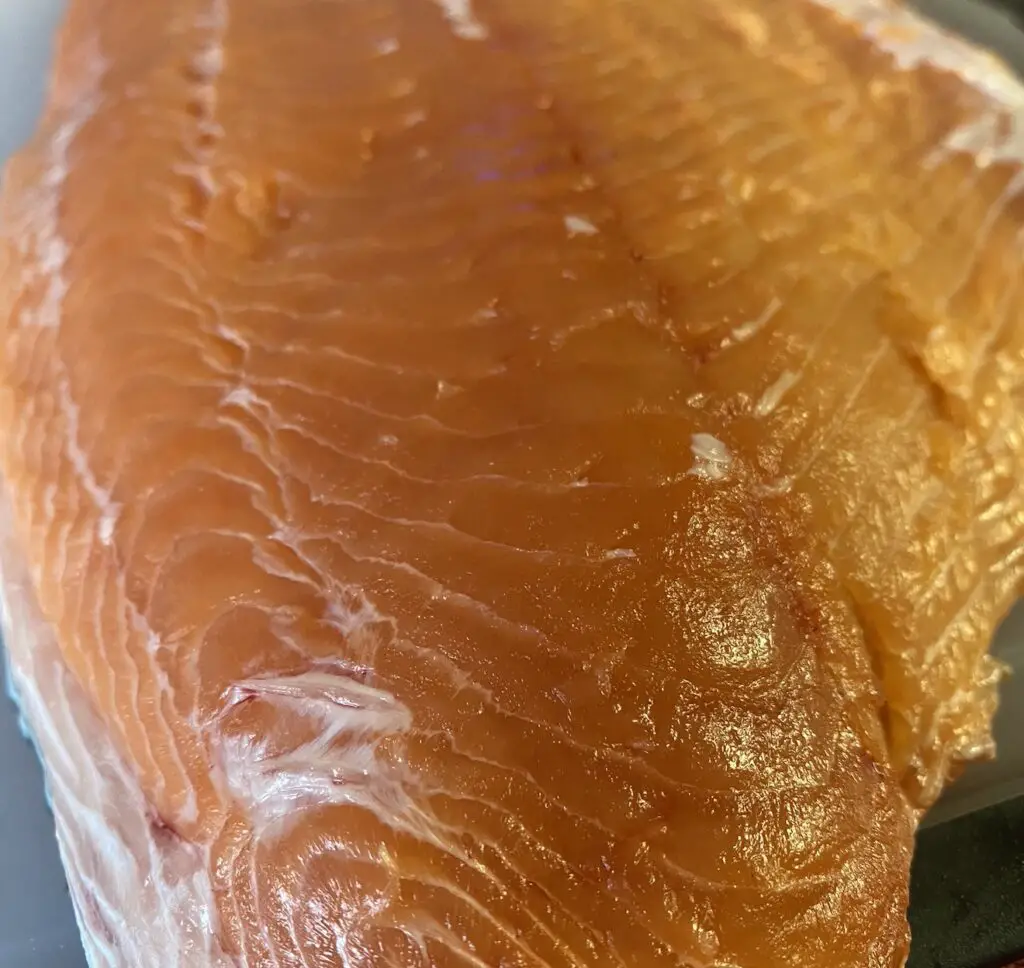
Over the last decade-plus, we’ve cooked hundreds of salmon fillets that we’ve caught in the local rivers and saltwater of the Pacific Northwest.
We’ve also become salmon snobs in the process as we cannot fathom eating salmon that is not harvested and prepared in the best way possible.
This article covers the BEST ways to cook salmon from a few salmon cooking “professionals”.
It’s amazing to me when I hear people say they don’t like salmon. Now some truly have a palette that rejects salmon, but often times it’s because people haven’t truly had properly prepared salmon.
Cooking great salmon is not hard, but there are some hard and fast rules which MUST be followed.
The line between great salmon and average to below average salmon is quite thin, and this is the primary challenge in cooking great tasting salmon.
Indirect heat
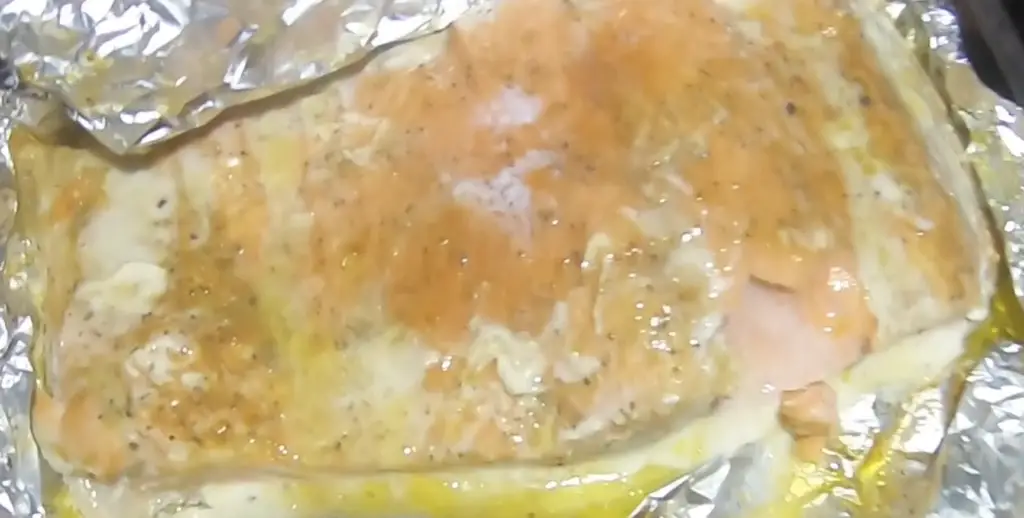
The most important thing to know when cooking great-tasting salmon is indirect heat.
I could have said it starts with great-quality salmon, but this isn’t necessarily true. More on salmon quality later.
The toughness and dryness overcooked salmon takes on that makes most people reject salmon, is caused by too lengthy exposure to direct heat.
Cooking salmon in the oven, over a fire, outdoor grill, or in a frying pan all carries this risk.
If you have a smoker or a multi-burner outdoor grill, you can make AMAZING-tasting salmon, guaranteed.
Yes, it will take longer to cook, and yes you can still overcook it.
However, you can time the doneness a bit better, and even when leaving it on the grill or smoker for slightly too long, you won’t have that dry/tough texture.
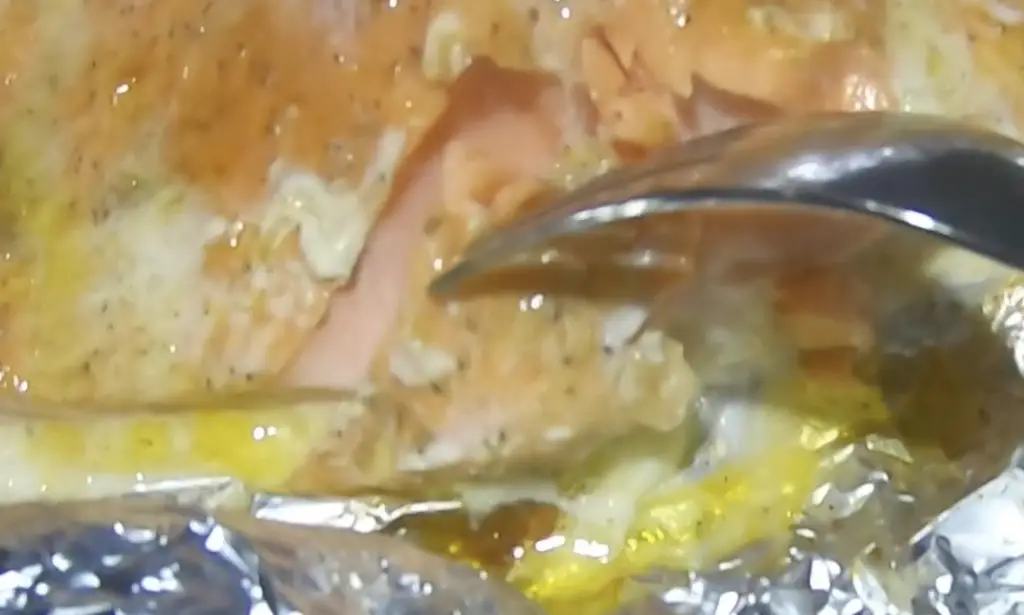
You can tell salmon is done when it has a very soft flakiness.
Firm flakey salmon is already overcooked. Mushy salmon with no flakiness is undercooked. You are looking for that just starting to flake texture.
Direct heat
Can you cook salmon with direct heat in the oven or on a frying pan? Absolutely!
However, there are some specific guidelines to follow here and care must be taken to avoid overcooking.
When cooking salmon in the oven or over direct heat, I will typically only use coho or sockeye fillets.
King salmon or even large coho fillets are often too thick. The amount of exposure to direct heat required to cook thick salmon fillets to doneness will almost always ruin the texture.
Salmon fillet shape and cooking factors
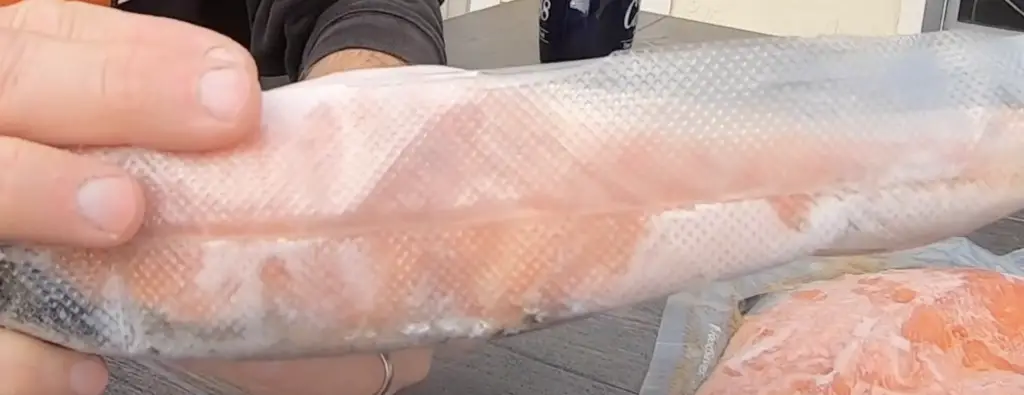
Whole salmon fillets come in a shape that is not ideal for cooking all at once without being strategic about it.
There’s a thick piece from the top of the salmon, a thinner belly piece, and a tailpiece that’s in between the thickness of the top / belly.
On a larger whole salmon fillet, I will often make cuts across the fish at the tail to separate it from the rest of the fillet as it tends to be thinner and contains less fat.
I will also make a lengthwise cut to remove the thin belly from the back or top piece.
Tails of salmon are almost always boneless which is a huge plus, but the tail also has the least amount of fat on it and can be quickly overcooked.
The top of the salmon is the thickest, and has decent fat, but will have a few bones to remove.
Speaking of bone removal, these tweezers are our favorites for removing these bones.
The belly of the salmon is the thinnest but also has the most fat. If the rib bones were properly removed, there should be no bones in it.
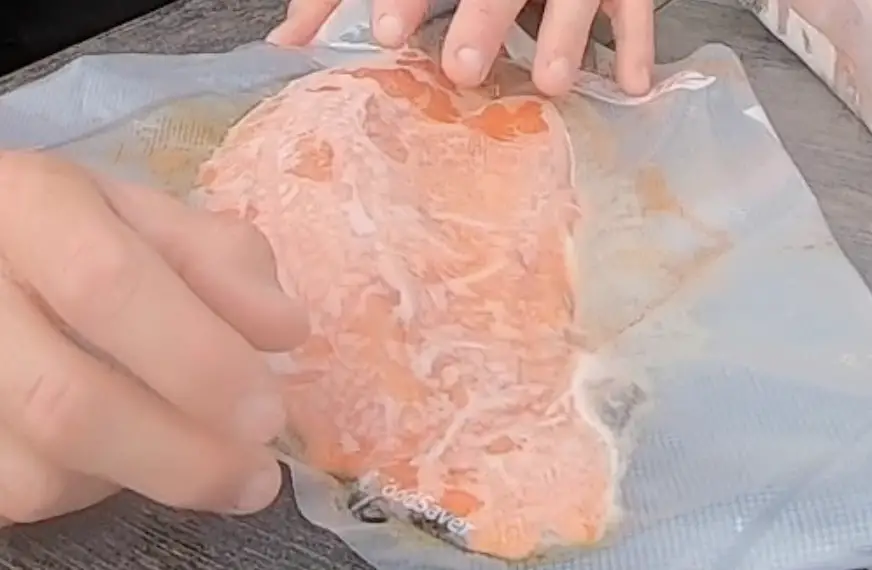
On a smaller salmon, I will cook the entire fillet at the same time as it doesn’t make a huge difference.
On a larger salmon fillet, I will make the cuts I described above and prepare the pieces separately.
Alternatively, you have a few more options when cooking with indirect heat.
If you are cooking over indirect heat, you can position the thickest portion of meat towards the heat source and cook it all at once.
On a smoker, for example, I will position the tail towards the end of the smoker which doesn’t have the heat source/firebox.
On a BBQ grill, I will position the top/back of the salmon towards the burner I’m using with the belly meat pointed in the other direction away from the heat.
When cooking with direct heat like in an oven or frying pan, unless you have a thin piece, you will almost always incorrectly cook each part of your salmon fillet.
Example: If you get the top / back to the desired doneness, the tailpiece will almost always be overcooked.
The belly may be overcooked, but because it has so much fat it’s often still okay, but not great.
Salmon fillet quality
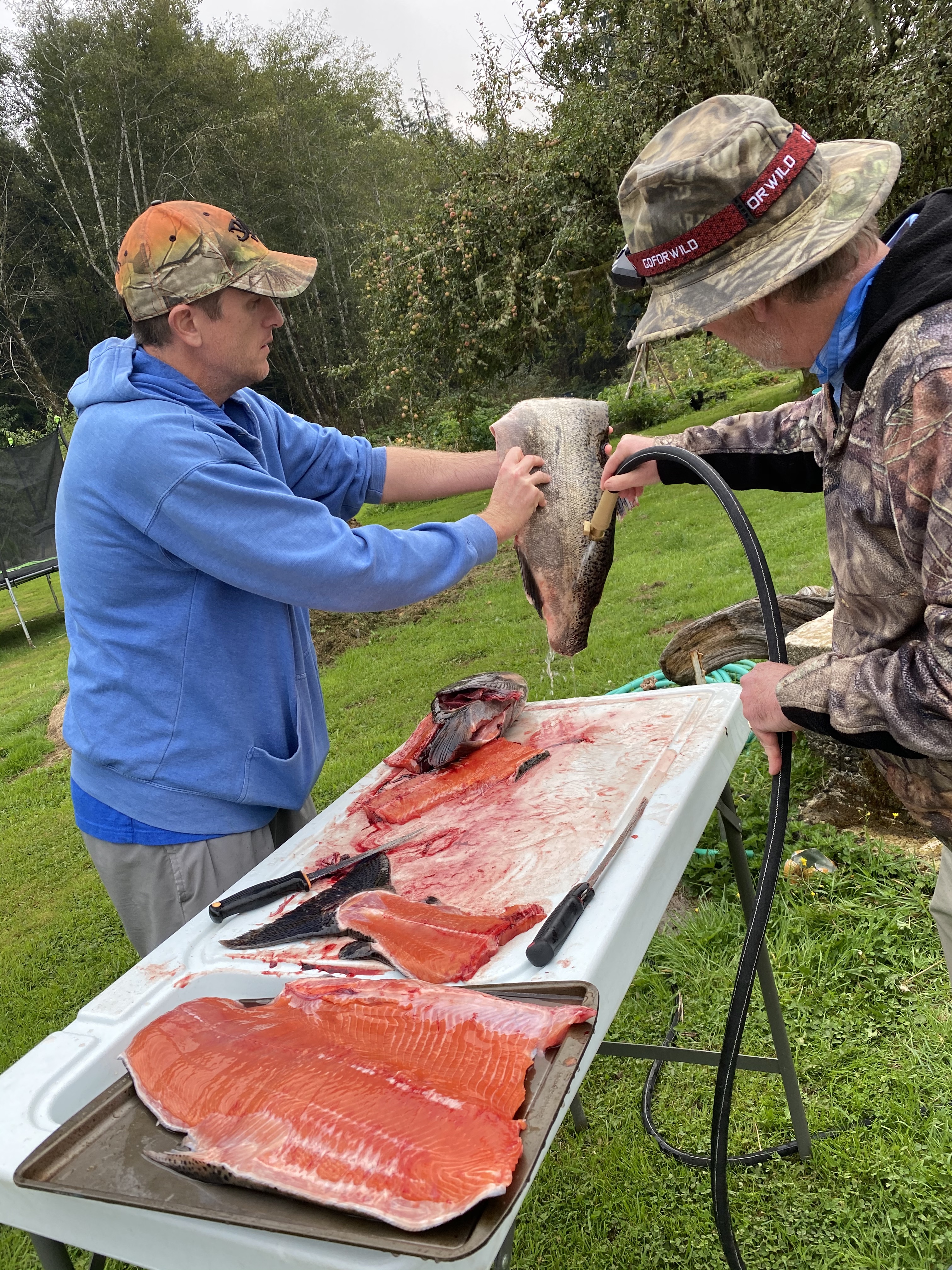
One of the best ways to cook great salmon is to start with great raw salmon!
If you are harvesting salmon yourself, you want salmon fillets that are firm and have that nice orange/red color to them (depending on species).
Mushy and or pale salmon fillets are not what you want to put on your grill or your plate.
Determining the quality of the salmon you catch
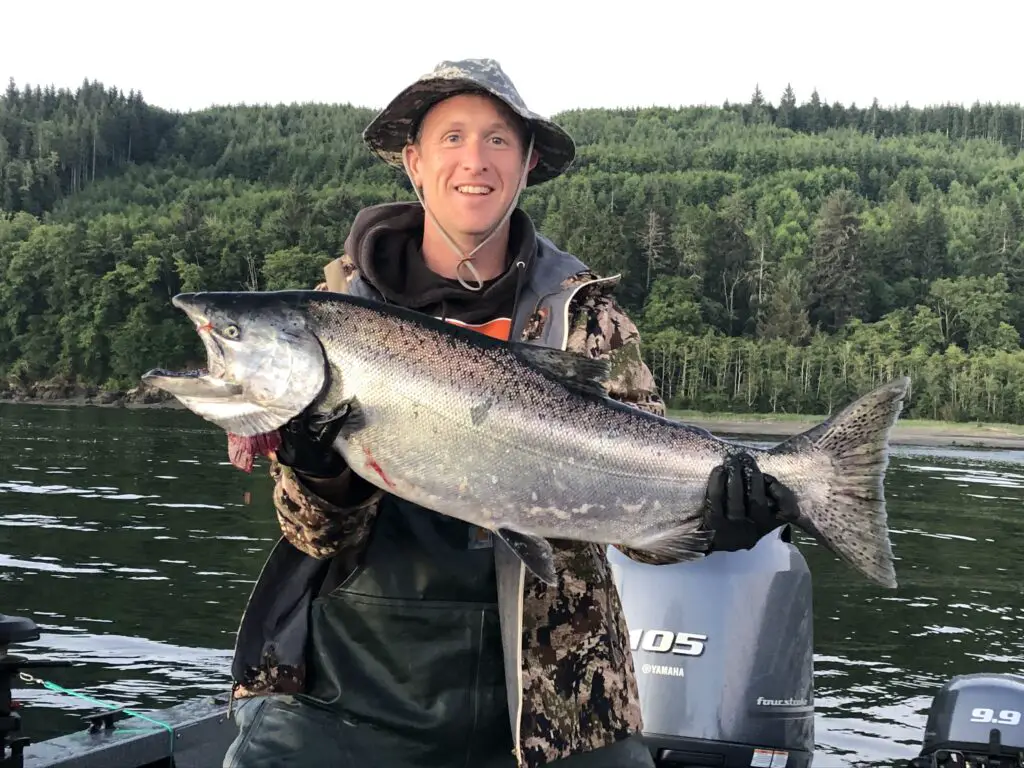
How can you tell how good a salmon is before you decide to bonk and bleed it?
For starters, most salmon you catch in the saltwater will be high quality (head over to our guide to Puget Sound salmon fishing for some fishy tips!).
When fishing the rivers, you have to be more picky as salmon start to die and lose their fat content as they migrate upriver to spawn.
Identifying high-quality salmon in a river can sometimes be a challenge, but over the years, I’ve developed a few reliable methods:
- Did the salmon put up a good fight? Salmon which spaz out, and dart frantically around are displaying a lot of vitality and energy. Salmon that make long slow runs or don’t move a lot when hooked, all the way until being netted or banked are giving you a clue that they don’t have much life or more importantly fat left in them. You can read more about salmon lifecycle as they travel upriver on our guide to river fishing for salmon.
- What color is the belly of the salmon? Even if the body of the salmon has color (in other words isn’t chrome), if the belly is white, this is often a good indicator the salmon is still good enough quality
- Finally, does the salmon feel firm. If you’ve netted the salmon in a safe way, you may get the chance to feel for the firmness of the body and belly before deciding to keep. Although usually, if a salmon fails test #1 or #2 above, I’m letting that fish go. I’ve got too much high quality salmon in my freezer to be keeping marginal salmon.
Salmon quality at the grocery store
I’m not a fan of buying salmon at a grocery store, or even ordering it at a restaurant…See my earlier statements about being a salmon snob. I realize, however, that for many of my readers here, this may be how you acquire salmon, so no judgment here.
You will generally find a few types of salmon at the grocery store:
Farm-raised – In general, buying salmon from fish farms may lead to supporting practices that are decimating salmon populations around the world.
Not all fish farms create harm to wild salmon, but many of them do when they raise salmon in the migration routes of wild salmon, which can cause diseases to spread.
Also, farmed fish quality will be a function of what is fed to these fish. You are what you eat.
When you see the label “farm-raised, color added”, and a cheap price tag, this is a clue that you might not want to consume this fish.
I have a friend who swears by his Costco farm-raised salmon and steelhead being what he likes, but…not all farmed fish are the same.
Wild caught coho – This is the most available salmon in the grocery store typically.
The coho fillets are perfect for a quick direct heat cooking approach when prepared and performed correctly.
Wild caught sockeye – Similar to coho, but generally less available, and higher quality.
Sockeye fillets have that brilliant red hue to them as they consume so much krill and typically have lots of fat.
Wild caught king salmon – Finding king salmon in the grocery store is typically rare.
You may have to go to a specialty store or one of the upscale markets to find king salmon.
Typically, prices will start at around 20$ and could be upwards of 30$ / pound.
If you spend that kind of money on king salmon and then throw it in the oven to bake and overcook…shame on you!
Silverbrite / Keto – Is a neat marketing label for what is otherwise known as “chum salmon”.
Chum salmon fillets caught in the salt water though will cook up just fine, but they will be of lesser quality as compared to all the other species of salmon.
Pink Salmon – I’ve never seen these sold in the store, save for as canned salmon…
Salmon fillet preparation
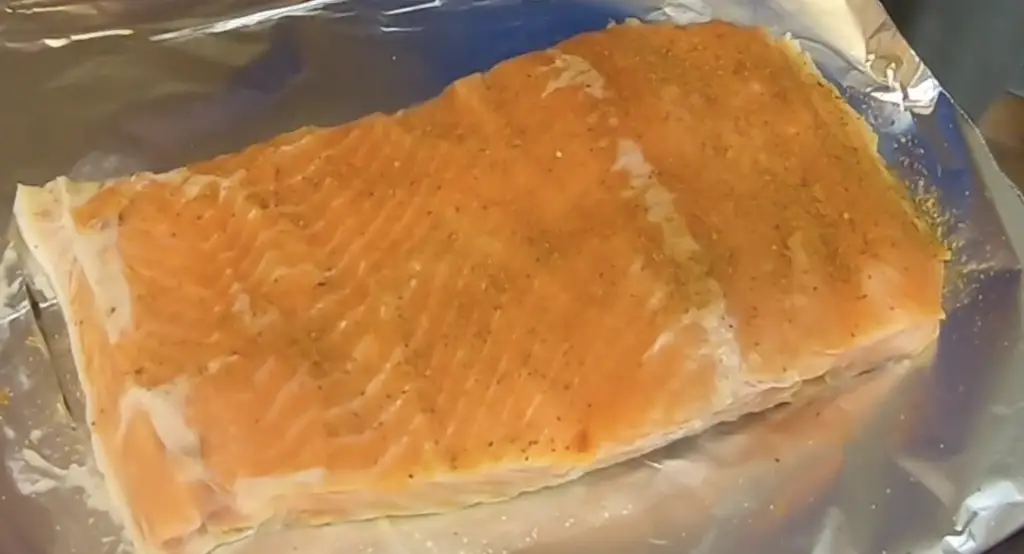
There are limitless different ways to prepare salmon in the form of rubs, sauces, and marinades.
What I try to remind people of, however, is that if you are cooking it the correct way as described above, and you started with high-quality salmon, you won’t have to do much to help it taste really really good.
On one camping trip in Sekiu, WA we didn’t have any seasonings with us, but we wanted to eat some of our fresh caught king salmon.
We acquired a square of tinfoil from a neighbor and put a slice of butter on the salmon fillet.
We proceeded to cook it over indirect campfire heat until it was perfectly done. Some of the best-tasting salmon I’ve experienced! (Of course, everything does taste better when camping, right?)
My point is that if you use a bit of oil / fat such as butter or olive oil and a bit of salt (salted butter accomplishes both) or some other simple seasonings such as dill, maybe a lemon wedge…you simply cannot go wrong.
Other top ways to cook salmon
Okay, so now that we’ve covered all the aspects of making the best-tasting salmon in the oven or with indirect heat, let’s talk about some other favorite ways to prepare great-tasting salmon.
Smoking salmon

Even people who aren’t fond of salmon usually love smoked salmon.
Everyone has their own way of brining and preparing smoked salmon, but this simple smoked salmon recipe will give you a great-tasting product and provide you with the basics you can use to experiment with later.
Making salmon lox
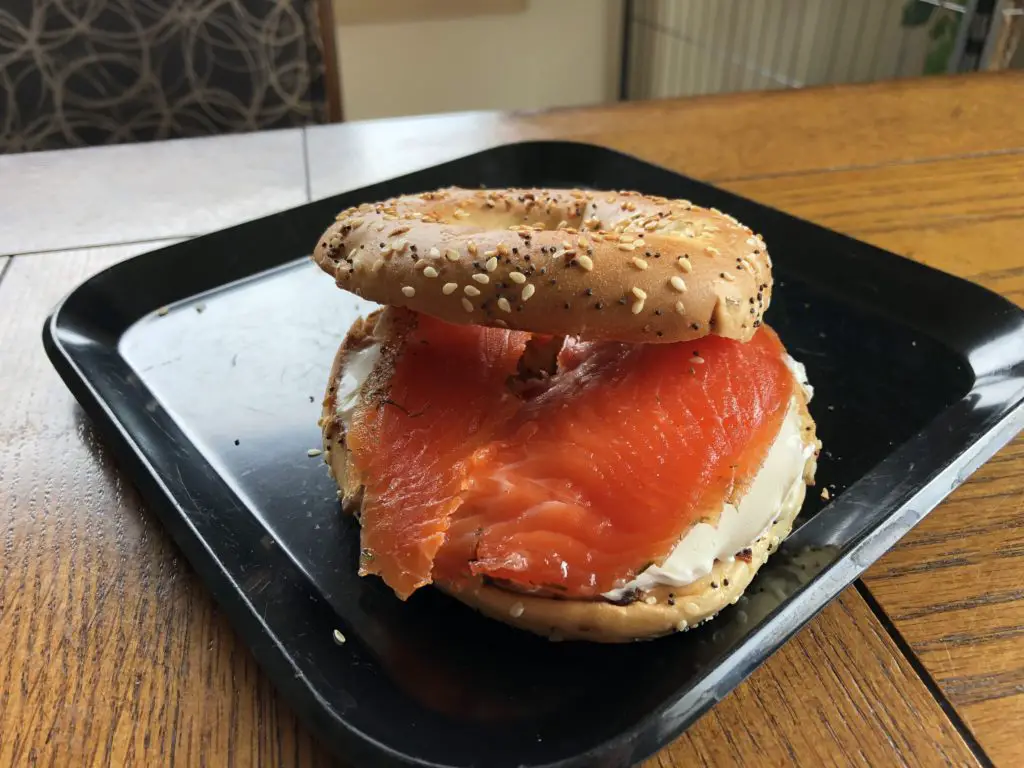
If you’ve never made salmon lox, you are missing out one of our favorite ways to prepare a thick fillet of king salmon.
Check out this detailed salmon lox recipe article for the most information on how to do it. Soon you will be enjoying salmon lox bagels and cream cheese like a boss.
Don’t cook your salmon
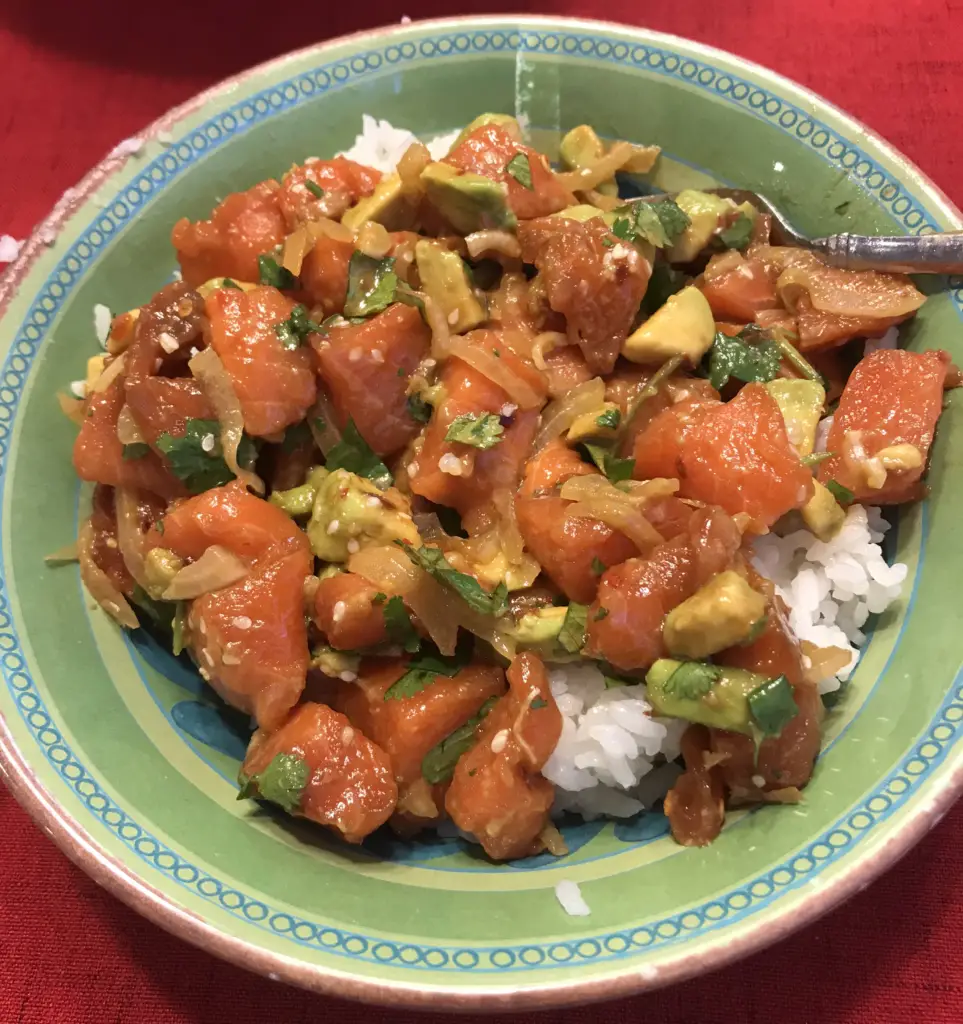
And now we’ve come to the best way to make salmon!
Don’t cook it at all!
If you follow the guidelines in this recipe for making salmon poke, you can safely enjoy (all raw seafood consumption has some risk) your salmon catch in a way that bypasses all the concerns about overcooking it.
Seriously, making salmon poke or simply consuming it as sashimi is our hands-down favorite method to consume high-quality salmon.